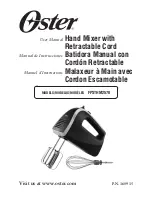
TM-D4000 Technical Documentation
7733 Telegraph Road • Montebello, CA 90640 • (323) 726-0303 • http://www.tascam.com
All features and specifications are subject to change without notice. Contact your local TASCAM representative for the latest information.
Page 3 of 5
TM-D4000_TECHDOC_030100.pdf
GENERAL OPERATION
(CONTINUED)
- continued from previous page
9 pin and MIDI Machine Control are standard on the back
panel of the TM-D4000. For users wanting to control
MDM machines like TASCAM DTRS machines or ADAT
format machines, the related remote ports are included
on their respective I/O
cards. (DTRS Remote
is on the TDIF card, and
ADAT Sync is on the
Lightpipe card.)
Setting up the TM-D4000
to recognize these
recorders is easy. The
machine control screen
can automatically search
for attached machines.
Personalities for most popular machines are already in
memory, and will be loaded in automatically. If your
machine doesn't show up, there are numerous known
personalities to choose from, allowing you to find a
similar personality to follow. (Most any standard audio
and video deck will be represented.)
Built-In Effect Processor
A built in effect processor offers a totally digital path for
effect processing. Reverb, delay, chorus, flange, phase,
pitch shift, stereo enhancer, compression, gates, and
de-essers are all available. All effect programs utilize
24 bit processing.
Libraries
Separate libraries are available for EQ settings, dynamics,
effects, and snapshots. The snapshots capture the entire
set-up of the mixer, while the others will store a specific
section.
EQ and dynamics libraries are extremely useful for storing
commonly used curves. For instance, a record could be
kept for the curve on the lead vocal, or the bass. Others
could be kept for a "phone voice" setting, or a dip on a
feedback frequency. The library or the "2 EQ" function
can also be used to copy settings from one channel to
one or several others. Setting up multiple channels the
same is typically helpful when mixing doubled parts, or
monitoring several takes of a single part for compilations.
Surround Sound
The TM-D4000 can be set up for standard stereo, 2+2
(quad sound), LCRS (Pro Logic™), or 5.1 (AC3™) matrices.
The surround sound panning screen offers simple control
over the positioning with
standard X/Y coordinate
controls. There are also
diagonal panning patterns
so you don't have to
"Etch-A-Sketch" across the
field. True to the 5.1
concept, a separate sub
output control is provided,
that is independent of all
other outputs.
DYNAMIC AUTOMATION SOFTWARE
A dynamic automation software application
comes with the TM-D4000, as does an ISA
serial card, and the cable to connect the card
to the mixer. The application can automate
fader levels, pan, mutes, EQ and aux sends.
The automation software runs on an external
PC, and offers several handy views for
different ways of looking at the parameters
of the TM-D4000. Dedicated automation
buttons on the TM-D4000 mean you can still
sit in the sweet spot when creating your
automated mix.
MX-2424 owners - This dynamic automation
software can run on the same computer as
ViewNet. (ViewNet is the GUI for the
MX-2424.)
Automation System Requirements:
• Windows 95™ or Windows 98™
• 233mHz Pentium™ II processor or better
• 32MB RAM or more (64MB recommended)
• Minimum display size of 1024x768
• Available ISA slot for the Moxa CI-132 card
(This card must be installed in the computer running
the automation software. There is a PCI version
available directly from Moxa: CP-132.)























